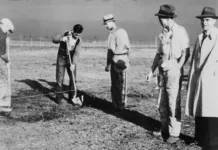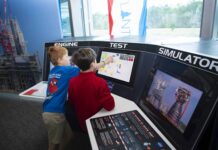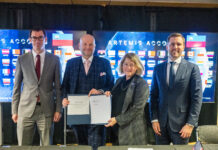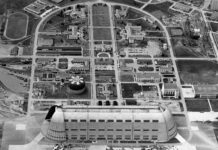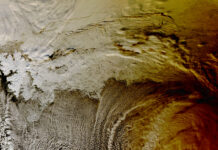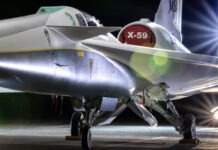NASA Astronaut Tracy C. Dyson to Share Insights from Her Six-Month ISS Mission
NASA astronaut Tracy C. Dyson is set to discuss the details of her recent six-month mission aboard the International Space Station (ISS) during a news conference scheduled for 11 a.m. EDT on Friday, October 4. This event will take place at NASA’s Johnson Space Center in Houston.
The conference will be broadcast live via NASA+ and on the agency’s official website. For those interested in streaming NASA content through various platforms, including social media, instructions are available on how to watch NASA programming.
Participation and Accreditation
Media professionals interested in attending the news conference in person must contact the NASA Johnson newsroom by 5 p.m. on Thursday, October 3. For those wishing to participate by phone, the newsroom must be contacted at least two hours before the event starts. Detailed information on NASA’s media accreditation policy can be found online.
To ask questions by phone during the conference, media representatives need to dial in at least 10 minutes before the event begins. Questions can also be submitted on social media using the hashtag #AskNASA.
Mission Highlights
Dyson’s third spaceflight spanned 184 days, during which she participated in 2,944 orbits around Earth, covering a total distance of 78 million miles as an Expedition 70/71 flight engineer. During her mission, she conducted a spacewalk lasting 31 minutes, bringing her career total to 23 hours and 20 minutes over four spacewalks. Dyson returned to Earth on September 23, along with her crewmates, Roscosmos cosmonauts Oleg Kononenko and Nikolai Chub.
Dyson’s journey began with a launch on March 23, arriving at the ISS on March 25 alongside Roscosmos cosmonaut Oleg Novitskiy and spaceflight participant Marina Vasilevskaya from Belarus. Novitskiy and Vasilevskaya stayed aboard the station for 12 days before returning to Earth with NASA astronaut Loral O’Hara on April 6.
Scientific Contributions
During her time on the ISS, Dyson engaged in numerous scientific and technological activities aimed at advancing space exploration and benefiting life on Earth. One notable project involved remotely controlling a robot on Earth’s surface from a computer aboard the ISS, which evaluated the effectiveness of orbit-to-ground operations.
Additionally, Dyson operated a 3D bioprinter to print cardiac tissue samples, a technology that holds promise for creating replacement organs and tissues for transplants on Earth. She also participated in the crystallization of model proteins to assess hardware performance for potential pharmaceutical production.
Dyson contributed to a program that utilized student-designed software to control the station’s free-flying robots, inspiring the next generation of innovators.
Broader Impact and Public Engagement
This mission is not only a testament to Dyson’s dedication and skill but also highlights the broader impact of space exploration on scientific and technological advancements. The experiments conducted aboard the ISS have the potential to revolutionize fields such as medicine, robotics, and materials science.
For those interested in staying updated on space station activities, follow @space_station and @ISS_Research on X (formerly known as Twitter), as well as the ISS Facebook, Instagram, and the space station blog.
Additional Good-to-Know Information
Impact of Spacewalks on Human Body
Spacewalks, or extravehicular activities (EVAs), are physically demanding tasks that require astronauts to work in the harsh environment of space. These activities can put a strain on the human body due to the lack of gravity, which affects muscle and bone density. Astronauts undergo rigorous training and physical conditioning to prepare for these challenges. Despite the difficulties, spacewalks are essential for maintaining and upgrading the ISS and for conducting scientific experiments that cannot be performed inside the station.
Benefits of 3D Bioprinting in Space
The 3D bioprinting technology used by Dyson to print cardiac tissue samples is a groundbreaking advancement. This technology allows for the creation of complex tissue structures that mimic the natural tissues in the human body. In the microgravity environment of space, 3D bioprinting can produce more accurate and functional tissue structures than on Earth. This has significant implications for medical research and the future of organ transplantation.
Crystallization of Proteins
The crystallization of proteins in space offers unique advantages over Earth-based experiments. In the microgravity environment, protein crystals can grow larger and with fewer imperfections, providing better data for researchers. This information is crucial for understanding the structure and function of proteins, which can lead to the development of new drugs and therapies.
Inspiring the Next Generation
Programs that involve student-designed software and other educational initiatives play a vital role in inspiring the next generation of scientists, engineers, and innovators. By engaging students in real-world space missions, NASA fosters a sense of curiosity and ambition that drives future advancements in science and technology.
Conclusion
Tracy C. Dyson’s six-month mission aboard the ISS is a remarkable achievement that underscores the importance of international collaboration in space exploration. The scientific and technological advancements made during her mission have the potential to benefit humanity in numerous ways. As NASA continues to push the boundaries of what is possible in space, the knowledge gained from these missions will pave the way for future explorations and discoveries.
For more detailed updates and insights, you can follow the official channels mentioned above or visit NASA’s website. This news conference is an opportunity to hear firsthand from Dyson about her experiences and the groundbreaking work conducted aboard the ISS.
For more Information, Refer to this article.


















